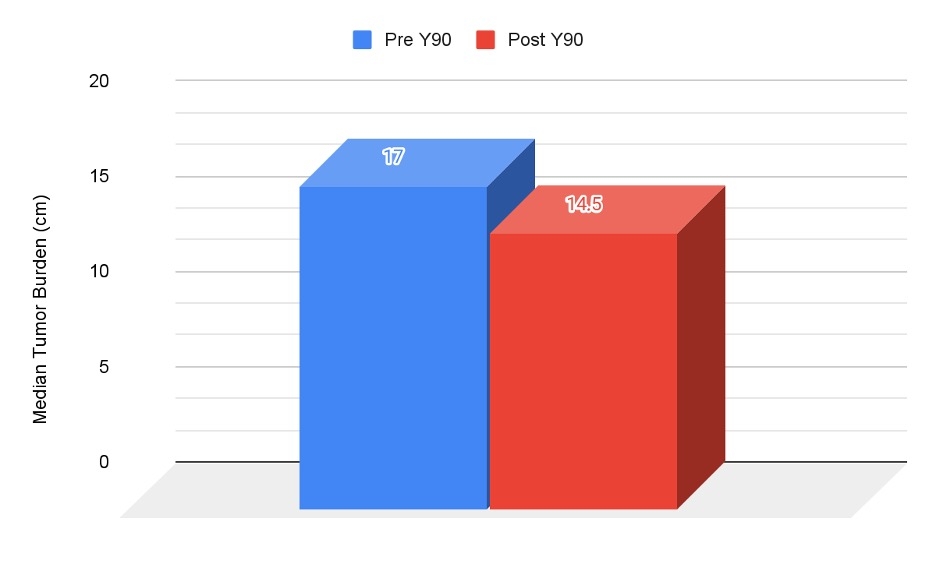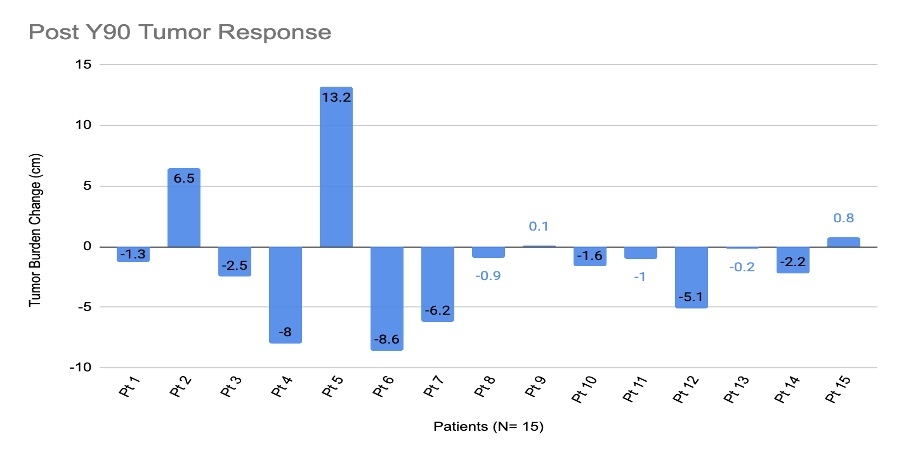Introduction
Intrahepatic cholangiocarcinoma (ICC) is a malignancy of the intrahepatic biliary epithelium. Due to its asymptomatic nature in early stages, it is often diagnosed late when curative surgery is no longer an option. For this reason, this cancer has a poor prognosis as a result of most patients being diagnosed in advanced stages of the disease. Although some palliative treatments have been attempted, the results have been variable. Systemic chemotherapy can extend survival marginally when compared to supportive care alone but is commonly associated with adverse effects. Therefore, localized treatments, such as Y90 radioembolization, have been researched for management of non-operative cases. Our research investigates the effects and impact of Y90 use in patients with unresectable ICC in our NUTCC.
Methods
This is a retrospective analysis of all patients (N=15) with diagnosed ICC, who received Y90 radioembolization treatment and subsequent follow-up between 2016 through 2022. Criteria for participation included a confirmed ICC diagnosis, a surgically unresectable tumor, satisfactory liver functionality, and the capability for angiography. Tumor burden pre and post Y-90 treatment was compared using t-test.
Results
Over 7 years, 15 individuals (10 females (66%), 5 males (33%) with a median age of 64 were treated. Prior to initiation of treatment, 7 (46%) of these patients had portal vein involvement, while only 2 had evidence of metastatic disease. Hypertension was documented in 7 (46%) of patients, while five (33%) patients had a prior history of type 2 diabetes mellitus. The average BMI of our patient population is 30.47 kg/m2. Regarding tumor distribution, 9 patients (60%) presented with a bilobar distribution while 6 (40%) had a unilobar distribution. All patients in this cohort received Sir-spheres Y-90 treatment. Median tumor burden (sum of diameter of target lesions) Pre and Post Y-90 treatment was 17 cm and 14.5 cm respectively (p=0.43). Nonetheless, 11 patients (73.3%) did show a decrease in tumor size post-Y90 treatment. Four (26.6%) patients required chemotherapy post Y-90. Importantly, the use of Y90 did not show a worsening of liver function test results.
Conclusion
In our high-volume center experience, a decrease in tumor burden after Y-90 radioembolization was observed in 74% of our cohort, or 11 out of the 15 patients. Thus, reflective of a positive therapeutic response. Nevertheless, further research is necessary to validate reliable downsizing of tumor burden through the use of Y-90 with the goal of tumor resection in inoperable ICC.

